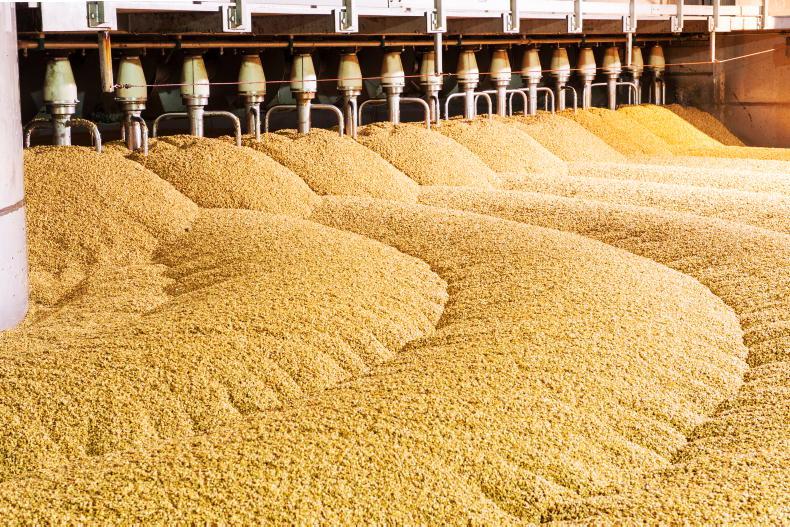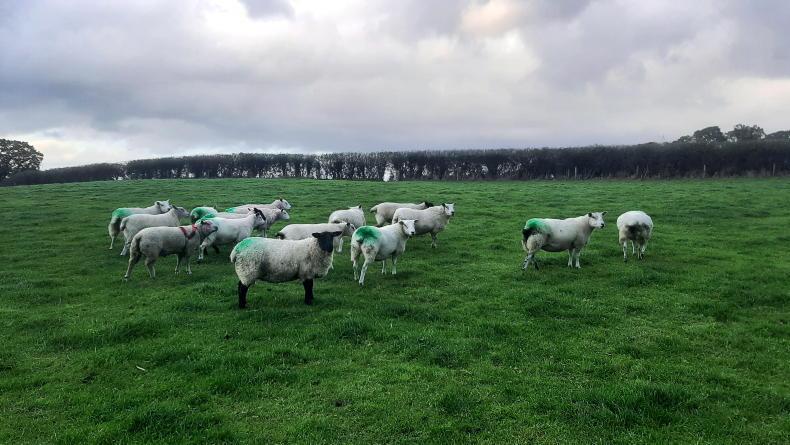A Teagasc researcher has warned that Irish grassland is actually a carbon source which emits more carbon dioxide than it sequesters.
Teagasc principal research officer Professor Gary Lanigan also said that a forthcoming change in how carbon emissions are calculated is a “headwind coming down the tracks” which the agricultural sector is facing.
Prof Lanigan explained how, up to now, “the way that land use was accounted for meant that it was a net remover of carbon dioxide”, but warned that a change in emissions accounting will now mean that it “becomes a source” of greenhouse gases.
Prof Lanigan made his comments during a presentation as part of an Agricultural Science Association (ASA) webinar on carbon emissions and the pathway forward for Irish farmers on Thursday.
Net basis
The Teagasc researcher said carbon emissions up to now have been counted on what's termed as a net basis.
“[This net basis] is that we assume an emissions baseline for things like cropland, forestry grasslands and wetlands and to determine our annual emissions, we take the value away from that baseline.”
Lanigan gave the example of Irish grasslands in 2021, which he said emitted 7m tonnes of carbon dioxide. He then demonstrated that the baseline for grassland emissions was 6.8m tonnes of the gas.
He said that after taking the 6.8m tonnes from the 7m, land use can be predicted to be a small carbon sink.
“However, we're moving towards counting all of the emissions, including all of those emissions that happened prior to 1990.”
Prof Lanigan said that in this new emissions accounting model, “we flip from being a small sink to being actually quite a large source [of carbon] in the land use sector”.
Grassland source
Prof Lanigan also explained that under the new accounting system, agriculture, forestry and other land use, which will all be grouped as a single global sector, “will actually account for over 40% of our national emissions”.
He told webinar attendees that a “second thing to note”, which he admitted will “probably be a surprise for people”, is that “grasslands are actually a very large source of carbon dioxide”.
He explained how grasslands are divided into two categories, mineral grasslands and peat grasslands.
They are emitting an average rate of about 20tn of carbon dioxide per hectare per year
In Ireland, he said that there is approximately 4m hectares of mineral grassland sequestering about half a tonne of carbon dioxide per hectare per year. He said this equates to 2m tonnes of carbon sequestered each year.
“But we've also got roughly about 350,000ha of grassland and cropland that is on peat soils and they are emitting an average rate of about 20tn of carbon dioxide per hectare per year.”
Prof Lanigan said the carbon emitted is the equivalent to “about five to six dairy cows per hectare”.
In total, he explained that the emissions from the 350,000ha of grassland and crops on peat soils creates a source of 9m tonnes of carbon each year.
He demonstrated the calculation of 9m (peat soils emit) minus 2m (mineral soils sequester) to demonstrate that, overall, Irish grassland is emitting about 7m tonnes of carbon dioxide each year.
Warming potential
Prof Lanigan also described “another headwind” facing the farm sector, the fact that the designation for the global warming potential of methane is increasing from 25 to 28 on an internationally recognised scale.
He said the 10% increase in methane’s global warming potential will mean a greater reduction in the gas will be needed to reach agriculture’s climate targets.
Read more
Grassland carbon sequestration ‘underestimated by about 100%’
A Teagasc researcher has warned that Irish grassland is actually a carbon source which emits more carbon dioxide than it sequesters.
Teagasc principal research officer Professor Gary Lanigan also said that a forthcoming change in how carbon emissions are calculated is a “headwind coming down the tracks” which the agricultural sector is facing.
Prof Lanigan explained how, up to now, “the way that land use was accounted for meant that it was a net remover of carbon dioxide”, but warned that a change in emissions accounting will now mean that it “becomes a source” of greenhouse gases.
Prof Lanigan made his comments during a presentation as part of an Agricultural Science Association (ASA) webinar on carbon emissions and the pathway forward for Irish farmers on Thursday.
Net basis
The Teagasc researcher said carbon emissions up to now have been counted on what's termed as a net basis.
“[This net basis] is that we assume an emissions baseline for things like cropland, forestry grasslands and wetlands and to determine our annual emissions, we take the value away from that baseline.”
Lanigan gave the example of Irish grasslands in 2021, which he said emitted 7m tonnes of carbon dioxide. He then demonstrated that the baseline for grassland emissions was 6.8m tonnes of the gas.
He said that after taking the 6.8m tonnes from the 7m, land use can be predicted to be a small carbon sink.
“However, we're moving towards counting all of the emissions, including all of those emissions that happened prior to 1990.”
Prof Lanigan said that in this new emissions accounting model, “we flip from being a small sink to being actually quite a large source [of carbon] in the land use sector”.
Grassland source
Prof Lanigan also explained that under the new accounting system, agriculture, forestry and other land use, which will all be grouped as a single global sector, “will actually account for over 40% of our national emissions”.
He told webinar attendees that a “second thing to note”, which he admitted will “probably be a surprise for people”, is that “grasslands are actually a very large source of carbon dioxide”.
He explained how grasslands are divided into two categories, mineral grasslands and peat grasslands.
They are emitting an average rate of about 20tn of carbon dioxide per hectare per year
In Ireland, he said that there is approximately 4m hectares of mineral grassland sequestering about half a tonne of carbon dioxide per hectare per year. He said this equates to 2m tonnes of carbon sequestered each year.
“But we've also got roughly about 350,000ha of grassland and cropland that is on peat soils and they are emitting an average rate of about 20tn of carbon dioxide per hectare per year.”
Prof Lanigan said the carbon emitted is the equivalent to “about five to six dairy cows per hectare”.
In total, he explained that the emissions from the 350,000ha of grassland and crops on peat soils creates a source of 9m tonnes of carbon each year.
He demonstrated the calculation of 9m (peat soils emit) minus 2m (mineral soils sequester) to demonstrate that, overall, Irish grassland is emitting about 7m tonnes of carbon dioxide each year.
Warming potential
Prof Lanigan also described “another headwind” facing the farm sector, the fact that the designation for the global warming potential of methane is increasing from 25 to 28 on an internationally recognised scale.
He said the 10% increase in methane’s global warming potential will mean a greater reduction in the gas will be needed to reach agriculture’s climate targets.
Read more
Grassland carbon sequestration ‘underestimated by about 100%’









SHARING OPTIONS